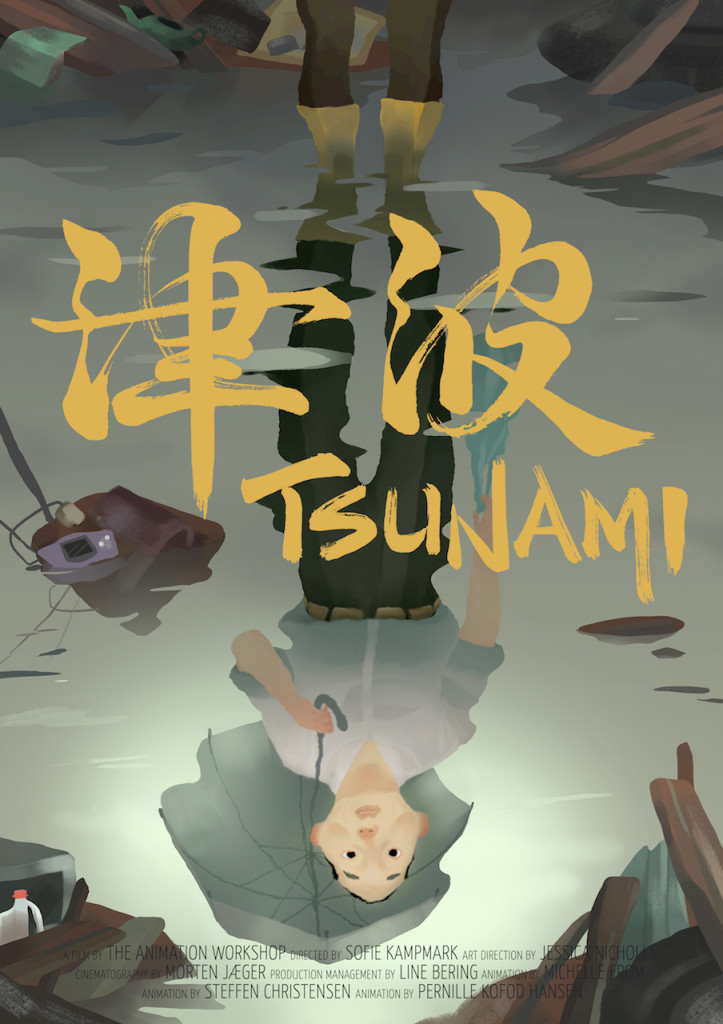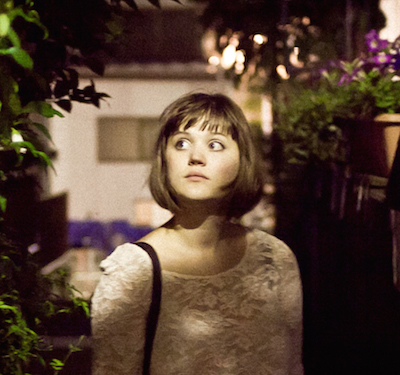Director Sofie Kampmark
Cinéfondation, Festival de Cannes 2015
“The film is about a Japanese man who returns to his home after it has been completely destroyed following a tsunami. He is in denial, and he cannot deal with reality because it is just too tragic. He tries to go about his daily business like he normally would, but then he discovers a trapped sea spirit in his bedroom, which makes denying what happened a little bit more difficult. He faces a choice when he discovers this creature; it is trapped, quickly drying up. He needs to forgive the situation, move on and save it, or stay in denial and let it wither away.”- director, Sofie Kampmark
GFM:
As a student at the Animation Workshop in Denmark you studied computer graphic art, and today you illustrate in a wide range of styles. Can you discuss your approach to illustrating Tsunami?
Sofie:
We were part of a team in Tsunami, so I was the one making the final decisions, but I can’t take all the credit for that. I had a very talented art director named Jess Nicholls. For some of our references, we looked at a lot of watercolor illustrations and traditional Japanese art. We specifically looked at the way the images were composed; they have a lot of straight and diagonal lines breaking them up.
We actually looked at a lot of live action films as well, which didn’t seem to be the case with some of the other animated films that came out of my year group whilst studying. We watched films from a Japanese director, and Tom Fords’ A Single Man. That was definitely an inspiration as to how we were framing things.

GFM:
I read that you had spent six months living in Tokyo several years ago. Was that an influence for the film?
Sofie:
Yes, it definitely was. I actually lived in Japan during the 2011 earthquake. I had lived there for a month when it hit, so that was a crazy experience for me. Of course it was partly due to the culture shock which was huge for me, coming from a country that has a population of 5,000,000 in total, to a city that has 32,000,000 just living right there, but it was also experiencing how the Japanese people dealt with the disaster and the aftermath. It was very inspiring.
I met a man who had lost a lot of family and had gone to look for them. He hadn’t succeeded – everything was just wiped away. But he told me that the sea had never looked more beautiful than on those days after the tsunami, when he was standing over his family home, realizing what had happened. There’s a Japanese philosophy of truly appreciating things when you have them. Somehow, even though a moment might be brief, it doesn’t necessarily make it less beautiful. In fact, sometimes it may even make it more beautiful. I found that incredibly moving. When I got back to Denmark and started school, I felt a need to tell that story, and how I experienced it.

GFM:
What are you most looking forward to when you attend the upcoming Cannes festival?
Sofie:
It’s incredibly exciting. Unfortunately the entire team can’t be there, we have seven people and two of them will not be attending, but I am really excited. We all worked so hard on the production, we had some really late nights towards the end. We had hugs and tears when we finished, and I think there’s going to be more hugs and tears in Cannes!
